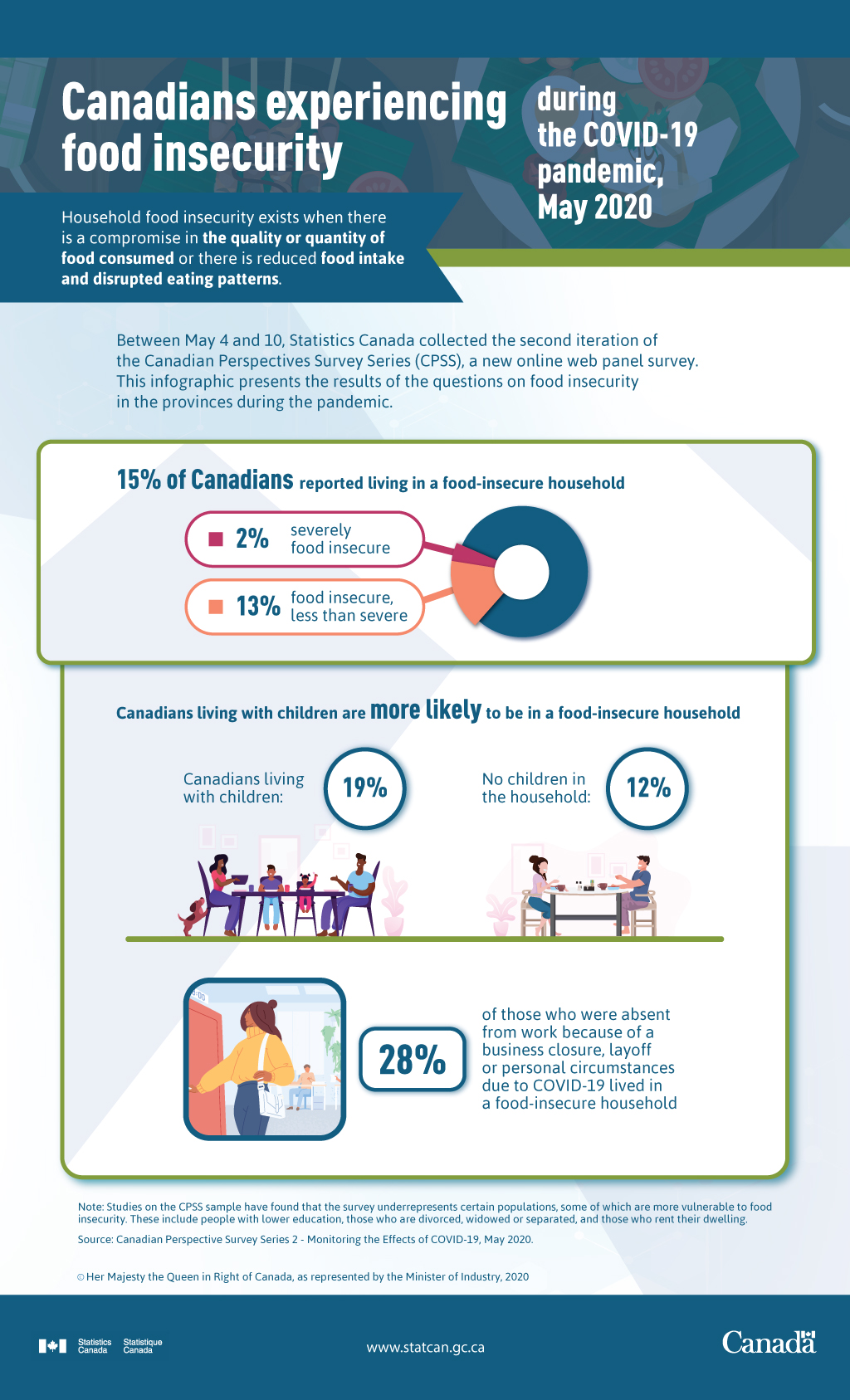Canadians experiencing food insecurity during the COVID-19 pandemic, May 2020
Archived Content
Information identified as archived is provided for reference, research or recordkeeping purposes. It is not subject to the Government of Canada Web Standards and has not been altered or updated since it was archived. Please "contact us" to request a format other than those available.

Description: Canadians experiencing food insecurity during the COVID-19 pandemic, May 2020
Canadians experiencing food insecurity during the COVID-19 pandemic, May 2020
Household food insecurity exists when there is a compromise in the quality or quantity of food consumed or there is reduced food intake and disrupted eating patterns.
Between May 4 and 10, Statistics Canada collected the second iteration of the Canadian Perspectives Survey Series (CPSS), a new online web panel survey. This infographic presents the results of the questions on food insecurity in the provinces during the pandemic.
15% of Canadians reported living in a food-insecure household
- 2% severely food insecure
- 13% food insecure, less than severe
Canadians living with children are more likely to be in a food-insecure household:
- Canadians living with children: 19%
- No children in the household: 12%
28% of those who were absent from work because of a business closure, layoff or personal circumstances due to COVID-19 lived in a food-insecure household
Note: Studies on the CPSS sample have found that the survey underrepresents certain populations, some of which are more vulnerable to food insecurity. These include people with lower education, those who are divorced, widowed or separated, and those who rent their dwelling.
- Date modified:
